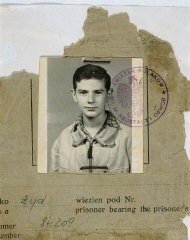You searched for: 网上电子游戏平台,网上电子游艺平台,【www.22kk66.com,复制打开网址】,电子博彩游戏大厅,十大电子游艺网站,正规博彩平台,澳门电子游艺娱乐城,电竞博彩平台,在线体育博彩网站,网上博彩平台大全,在线博彩平台排名,电竞博彩论坛,AG博彩平台推荐,,22kk66.com网址KAxBxKhfxfKfBEdBd
<< Previous | Displaying results 1-50 of 575 for "网上电子游戏平台,网上电子游艺平台,【www.22kk66.com,复制打开网址】,电子博彩游戏大厅,十大电子游艺网站,正规博彩平台,澳门电子游艺娱乐城,电竞博彩平台,在线体育博彩网站,网上博彩平台大全,在线博彩平台排名,电竞博彩论坛,AG博彩平台推荐,,22kk66.com网址KAxBxKhfxfKfBEdBd" | Next >>
-
Thomas at age 13 months
PhotoThomas at age 13 months with his father, Mundek Buergenthal. Czechoslovakia, June 1935.
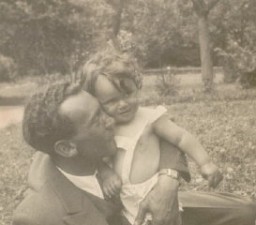
-
Suse Grunbaum at age one
PhotoPhotograph taken in December 1932 of Suse Grunbaum at age one. Soon after Hitler's 1933 seizure of power in Germany, two-year-old Suse and her parents fled to the Netherlands and settled in the town of Dinxperlo. In 1943, Jews in German-occupied Dinxperlo were ordered to assemble for deportation. Hearing of these plans, the Grünbaums went into hiding, finding refuge with Dutch farmers. The Hartemink family hid Suse and her mother for two years in their barn, first under the floorboards, then in a…
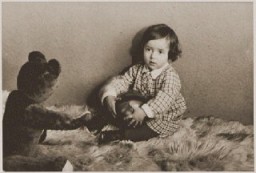
-
Anne Frank at 11 years of age
PhotoAnne Frank at 11 years of age, two years before going into hiding. Amsterdam, the Netherlands, 1940.
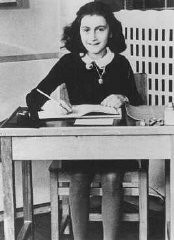
-
Photograph of Anne Frank at five years of age
PhotoAnne Frank at five years of age. Bad Aachen, Germany, September 11, 1934.
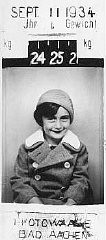
-
Amalie Petranka (later Salsitz)
PhotoAmalie Petranka (later Salsitz) at 22 years of age. She gave this photo to Norman Salsitz shortly after they met. Photograph taken in Stanislawow, Poland, on October 10, 1939.
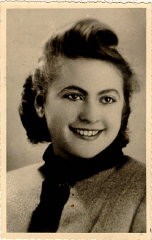
-
Fürstengrube
ArticleLearn about Fürstengrube subcamp of Auschwitz, including its establishment, administration, prisoner population, and forced labor and conditions in the camp.
-

-
Berga-Elster ("Schwalbe V")
ArticleAt the Berga-Elster subcamp of Buchenwald, prisoners were forced to do dangerous and brutal work in tunnels to support fuel production for the German war effort.
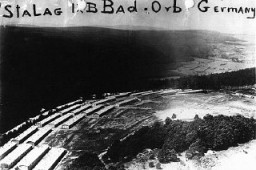
-
Melk
ArticleLearn about the establishment of and conditions in Melk, a subcamp of the Mauthausen camp system in Austria.
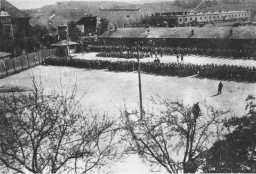
-
Mobile Killing Squads
ArticleLearn more about Nazi mobile killing squads (Einsatzgruppen) killing activities in the Soviet Union during World War II.
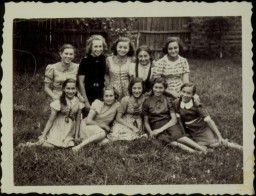
-
The Wannsee Conference and the "Final Solution"
ArticleThe Wannsee Conference was a high-level meeting of Nazi Party and German State officials to coordinate “the Final Solution of the Jewish Question.” Learn more.
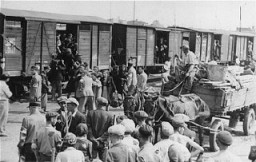
-
“Give Me Your Children”: Voices from the Lodz Ghetto
ArticleThe Jewish children of Lodz suffered harsh conditions after the German invasion of Poland. Read excerpts from diaries where they recorded their experiences.
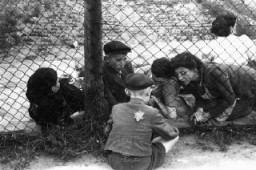
-
Jewish Badge: During the Nazi Era
ArticleNazi officials implemented the Jewish badge as a key element in their plan to persecute and eventually destroy the Jewish population of Europe. Learn more
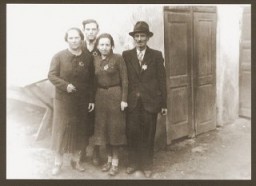
-
Betje Jakobs
ID CardBetje and her sister Saartje were born to Jewish parents in the town of Zwolle in the Netherlands' north central province of Overijssel. Betje was known affectionately as "Bep" to her friends. The Jakobs family owned a successful sporting goods store. 1933-39: As a young girl, Betje enjoyed playing the piano, knitting and tennis. At age 16, while still in secondary school, she began to date Maurits Wijnberg, a boy two years her senior, whose family owned Zwolle's Hotel Wijnberg. 1940-42: The Germans…

-
Benjamin Soep
ID CardBenjamin, called "Benno" by his family and friends, grew up in a religious Jewish household in Amsterdam. Benno's father, a successful diamond manufacturer, was president of the Amsterdam Jewish community. Benno had two younger sisters and enjoyed collecting stamps. 1933-39: After he obtained some work experience in a department store, Benno joined his father in the diamond business. Benno adhered strictly to Jewish law. He loved tennis and skiing, and in 1938, while skiing in Switzerland, he met a girl…
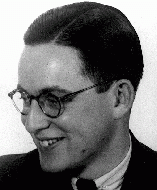
-
Rachel Lea Galperin
ID CardRachel, born Rachel Karpus, was born to a Jewish family in the northeastern Polish city of Vilna. At the age of 16, Rachel married Reuven Galperin, a typesetter for a Jewish newspaper in the city, and the couple subsequently had 16 children. Only nine of the children lived to the 1930s. 1933-39: In addition to caring for her children, Rachel also operated a small grocery on Nowigorod Street. In 1938 Rachel's husband died. One year later, on September 1, 1939, Germany invaded Poland and 17 days after that…
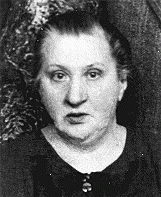
-
Theresienstadt: Establishment
ArticleLearn about the establishment of the Theresienstadt camp/ghetto, which served multiple purposes from 1941-45 and had an important propaganda function for the Germans.
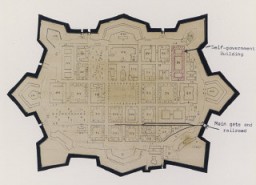
-
Stahlecker Report
Timeline EventOctober 15, 1941. On this date, Walter Stahlecker submitted a report on the killing of Jewish civilians in the northwestern Soviet Union.
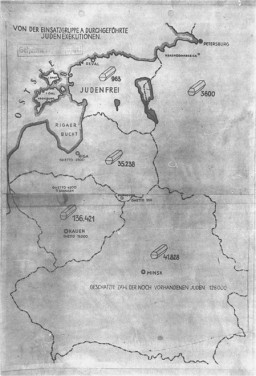
-
The Bielski Partisans
ArticleUnder the protection of the Bielski partisan group, founded by brothers Tuvia, Asael, and Zus, over 1,200 Jews survived after fleeing into forests in western Belarus.
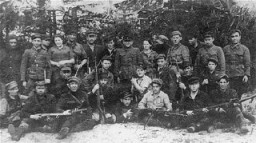
-
Tehran Children
ArticleLearn about the “Tehran Children,” a group of Polish-Jewish refugees. In 1942, they were resettled from the Soviet Union to Palestine via Iran.
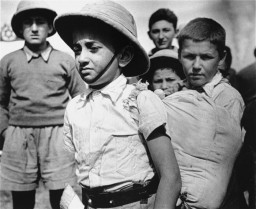
-
Les Milles Camp
ArticleUnder the Vichy regime, the Les Milles camp held foreign Jews before emigration or, in most cases, deportation to German concentration camps and killing centers.
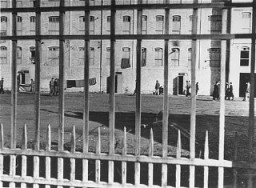
-
Dawid Sierakowiak
ArticleYoung people's diaries capture some of the most heartbreaking experiences of the Holocaust. Learn about the diary and experiences of David Sierakowiak.
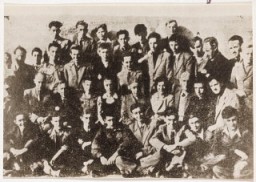
-
Sara Rachela Plagier
ArticleChildren's diaries bear witness to some of the most heartbreaking events of the Holocaust. Learn about the diary and experiences of Sara Rachela Plagier.
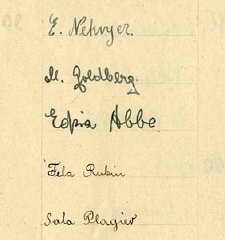
-
1945: Key Dates
ArticleExplore a timeline of key events during 1945 in the history of Nazi Germany, World War II, the Holocaust, and liberation and the aftermath of the Holocaust.
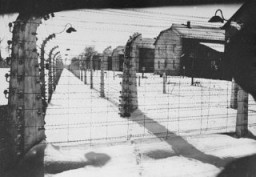
-
Odessa
ArticleIn 1941, Romania occupied Odessa, Ukraine. Learn more about the subsequent reprisal, ghettoization, and deportation during World War II.
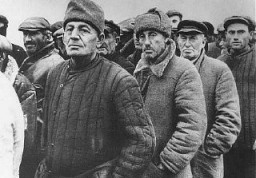
-
Jutta Szmirgeld
ArticleChildren's diaries bear witness to some of the most heartbreaking events of the Holocaust. Learn about the diary and experiences of Jutta Szmirgeld.
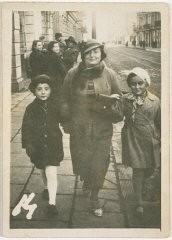
-
Indoctrinating Youth
ArticleThe Nazi Party targeted German youth as a special audience for its propaganda messages. Read more about the indoctrination of youth.
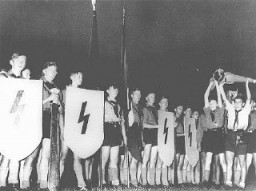
-
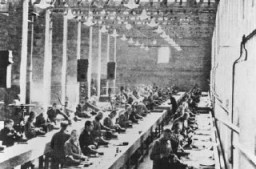
-
Jewish Badge: Origins
ArticleDecrees that ordered Jews to wear special badges for purposes of identification existed before the Nazi era. Learn about this history.
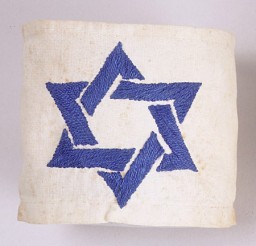
-
1942: Key Dates
ArticleExplore a timeline of key events during 1942 in the history of Nazi Germany, World War II, and the Holocaust.
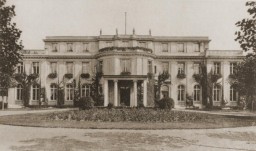
-
Blood Libel
ArticleBlood libels were false allegations that Jews used the blood of non-Jewish children in rituals. Nazi propagandists used this false charge in their antisemitic propaganda.
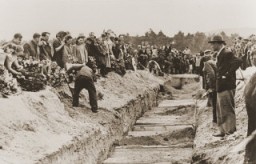
-
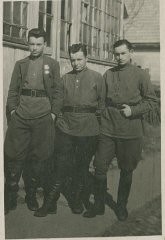
-
Waiting to register
PhotoAfter the occupation of Odessa, Ukrainian Jews wait to register. Odessa, Soviet Union, October 22, 1941.

-
Crematoria and remains in the Majdanek camp
PhotoCharred remains of corpses near crematoria in the Majdanek camp, after liberation. Poland, after July 22, 1944.
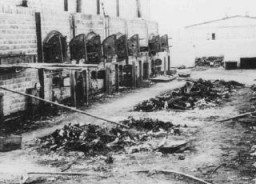
-
Majdanek camp after liberation
PhotoView of watchtower and fence at the Majdanek camp, after liberation. Poland, after July 22, 1944.
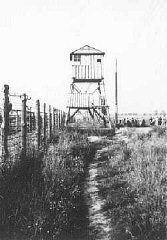
-
Armenian refugee children
PhotoA group of 1,500 Armenian children at a refugee camp of the Near East Relief organization in Alexandroupolis. Greece, 1921–22.
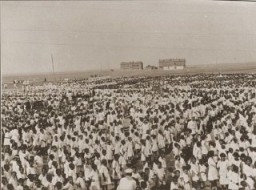
-
Christoph Probst
PhotoChristoph Probst, a member of the White Rose student opposition group. Probst, arrested and condemned to death by the People's Court, was executed on February 22, 1943.
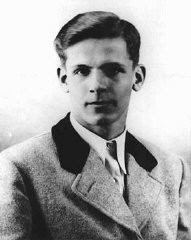
-
Containers of Zyklon B
PhotoContainers of Zyklon B poison gas pellets found at the Majdanek camp after liberation. Poland, after July 22, 1944.
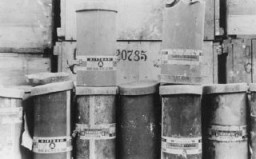
-
The War Refugee Board
ArticleThe War Refugee Board was formed in 1944 by executive order under President Roosevelt. It was tasked with the rescue and relief of victims of Nazi oppression.
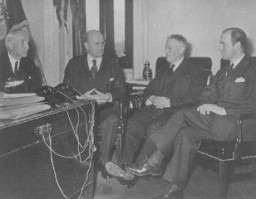
-
Resistance inside Germany
ArticleSome individuals and groups in Germany attempted to resist Nazism, despite the risk of being caught and facing punishment. Learn more about their efforts.
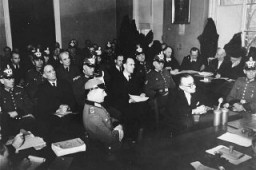
-
Chaim Benzion Cale
ArticleChildren's diaries bear witness to some of the most heartbreaking events of the Holocaust. Learn about the diary and experiences of Chaim Benzion Cale.
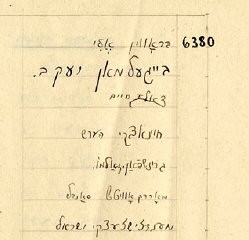
-
Bernard Musmand
ArticleRead the Jewish Partisan Educational Foundation's short biography of Bernard Musmand.

-
Eugenio Gentili Tedeschi
ArticleRead the Jewish Partisan Educational Foundation's short biography of Eugenio Gentili Tedeschi.

-
Hitler Youth
ArticleThe Hitler Youth and the League of German Girls were developed as Nazi Party youth groups to indoctrinate children and youth in Nazi ideology and policy.
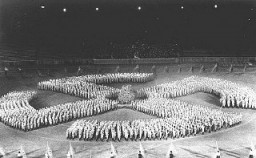
-
The Holocaust in Macedonia: Deportation of Monastir Jewry
ArticleIn March 1943, Bulgarian authorities transported the entire Jewish community of Monastir to a transit camp from which they were deported to Treblinka.
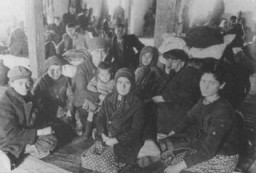
-
Uckermark Youth Camp
ArticleThe Uckermark camp was one of the so-called youth protection camps that the Nazi regime established for young people who were alleged to have strayed from Nazi norms and ideals.
-
Theresienstadt: Concentration/Transit Camp for German and Austrian Jews
ArticleLearn about the role of Theresienstadt in the deportation of German and Austrian Jews to killing sites and killing centers in the east.
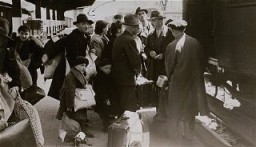
-
Anne Frank at her school desk
PhotoAnne Frank, age twelve, at her school desk. Amsterdam, the Netherlands, 1941.
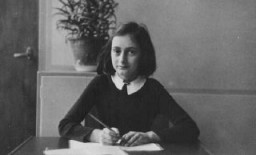
-
Studio portrait of Jankl Zuckerkandel
PhotoStudio portrait of Jankl Zuckerkandel, taken in The Hague, the Netherlands, in or around 1941. Jankl was killed in Sobibor at the age of three.
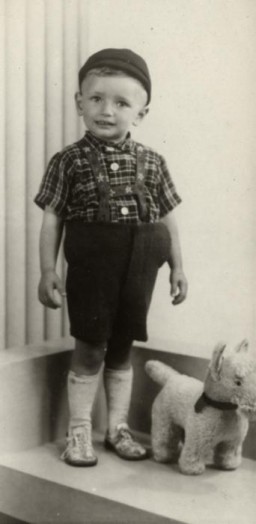
-
Chaim Kozienicki
ArticleChildren's diaries bear witness to some of the most heartbreaking experiences of the Holocaust. Learn about the diary and experiences of Chaim Kozienicki.
